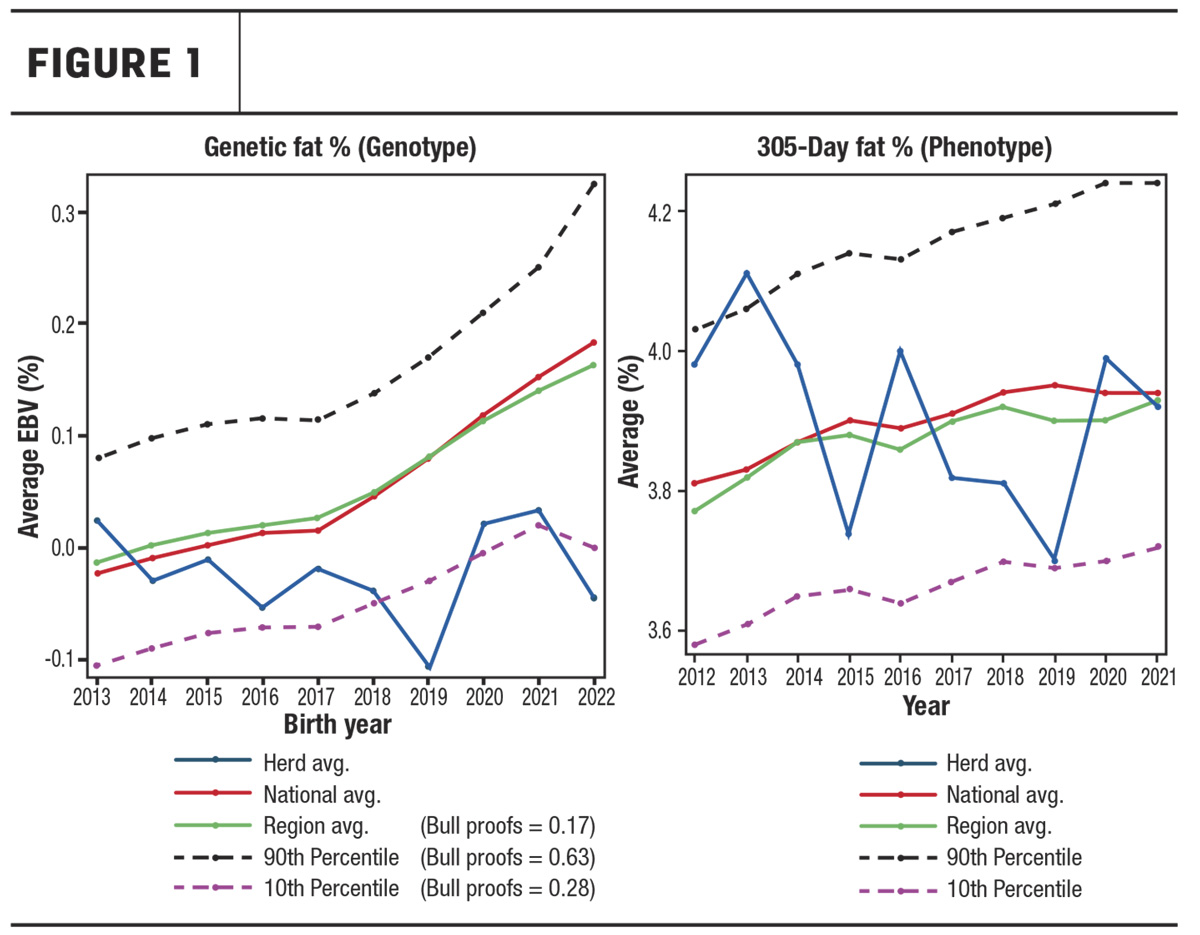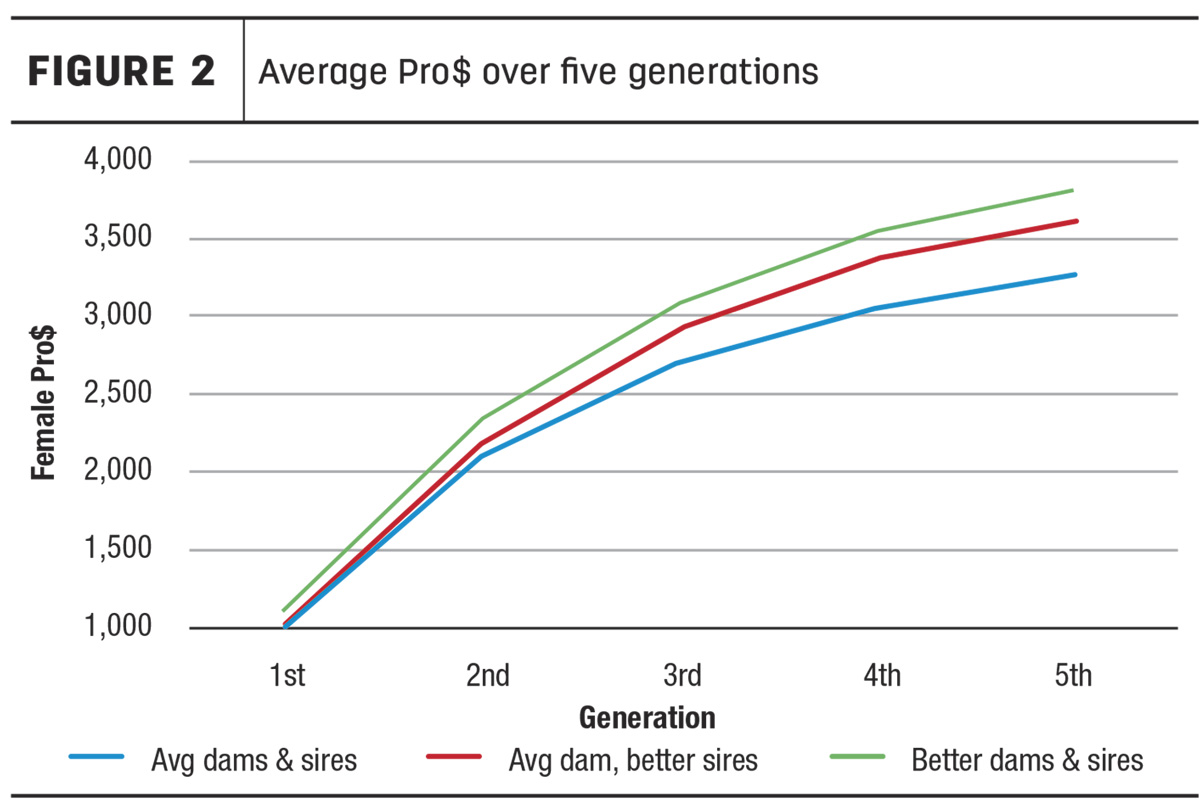To ready this in French, Click here.
The daily routine in a dairy farm is something unique to our industry, and so much happens in a day that it is impossible to describe the variety of things that get done, including numerous decisions that are made on the go. Especially during the cropping season, these decisions are made without you even realizing or putting in a lot of thought. However, when making decisions related to reproductive and genetic strategies, all caution is necessary due to the long-term impact to your herd and your business’s bottom line. Breeding a below-average cow to an average bull may not seem that impactful. However, the offspring from these matings will contribute to slightly reduce the herd’s profit margin over time. In the end, it is money left on the table.
Setting up a genetic strategy for success
For every goal on a dairy farm, there must be a reason and a plan to reach it. You plan your crops based on the land you have, seeds, fertilization, field yields, crop history, and so on. This is how you should approach breeding cows, too – a thorough analysis considering all pieces of the puzzle. For example, breeding all heifers to sexed semen is not optimal because you likely have some cows with more potential than a few heifers. No matter your herd size or breeding approach, the basis of a plan must be built around a few points:
- Which animals are worth keeping
- Which animals you would like to transmit genetics to the next generation
- What type of semen (sexed, conventional, beef), and which specific bull addresses what you want to achieve with each breeding
The answers to these will drive the gains you see year after year. Therefore, the focus should be on accurately selecting the animals that have the most potential to generate daughters that will become the ideal cows for your herd. At this point, it is very relevant to be realistic about where the herd is in terms of genetics and performance so you can identify the traits and genetics that are holding you back. Then, you must identify the animals that excel in desirable traits so they can be used as parents for the next generation. Figure 1 shows a herd that hasn’t focused on fat percentage, even though the cows are outperforming their prediction; maybe some focus on this specific trait will help boost their fat yield.

Heavier selection and higher accuracy are key
Whenever you’re thinking about genetic improvement, there are three pieces to consider to achieve quicker gains: intensity of selection, selection accuracy and generation interval. The equation below is the basis for genetic improvement. The green pieces are the ones you can control on-farm, while the genetic variance piece is mostly dependent on the A.I. company.
The intensity is how high the genetic merit of the animals you are mating is; using high-genetic bulls is better than using average ones, but using your top females as dams can really boost the gains as well. Here is where a strategy using beef and sexed semen can be helpful. However, selecting top animals without accuracy doesn’t do the job. It would be the same as getting the best corn seeds to use on a field that does not have the proper conditions for that corn variety. For better accuracy, having good production, health and conformation records is important, while genomic testing young animals helps you choose the best ones.
Figure 2 shows the genetic gain made over five generations in different scenarios:

- Using average bulls and dams
- Choosing better bulls to use on average dams
- Using better bulls and your best dams
Over time, the difference between the groups increases, meaning your cows could be even more profitable if you use a good strategy.
On the generation interval, using younger animals to generate females is a good way to reduce the interval, boosting genetic gain. However, just breeding all heifers to sexed semen is not optimal because the top-end young cows will have higher genetic potential than some heifers.
Doing a breeding strategy simulation using a real herd, two scenarios were created – either getting females only from heifers or getting females from the top animals regardless of age. The same bulls were used in both (see Table 1). The profitability prediction difference is over $400 between the groups.

When talking about genetic improvement, balance is key
We often talk about well-balanced cows – those with a solid conformation without severe faults, above-average production, with sound health and fertility. Even though these may not catch your eye right away, they are normally trouble-free and very profitable, something essential no matter your herd’s goals. Also, a balanced breeding strategy with a combination of conformation, production and functional traits is the best approach when thinking about profitability. Overall, a herd with well-balanced cows makes the breeding process easier because you can be more aggressive and focus on the traits you find most linked to profitability or limiting within your herd instead of fixing severe problems generation after generation.

What can you do now?
Any breeding strategy is based on high accuracy and how selective you are picking the parents. Just picking good bulls will certainly improve your herd year after year. However, a lot of difference is made by aggressively selecting your females to breed from, which requires accuracy and precision. Using just their parents’ information (parent average) to make decisions is far from the most accurate way to do it. Once you breed a cow to a certain bull with the intention to improve certain traits, you don’t necessarily get what you expect. By genomic testing, you increase accuracy and find out what worked and what didn’t in that breeding. Also, a common strategy of just breeding heifers to sexed semen may reduce generation interval, but it leaves a lot of possible gains on the table. Remember, balanced cows that are trouble-free are very profitable.









